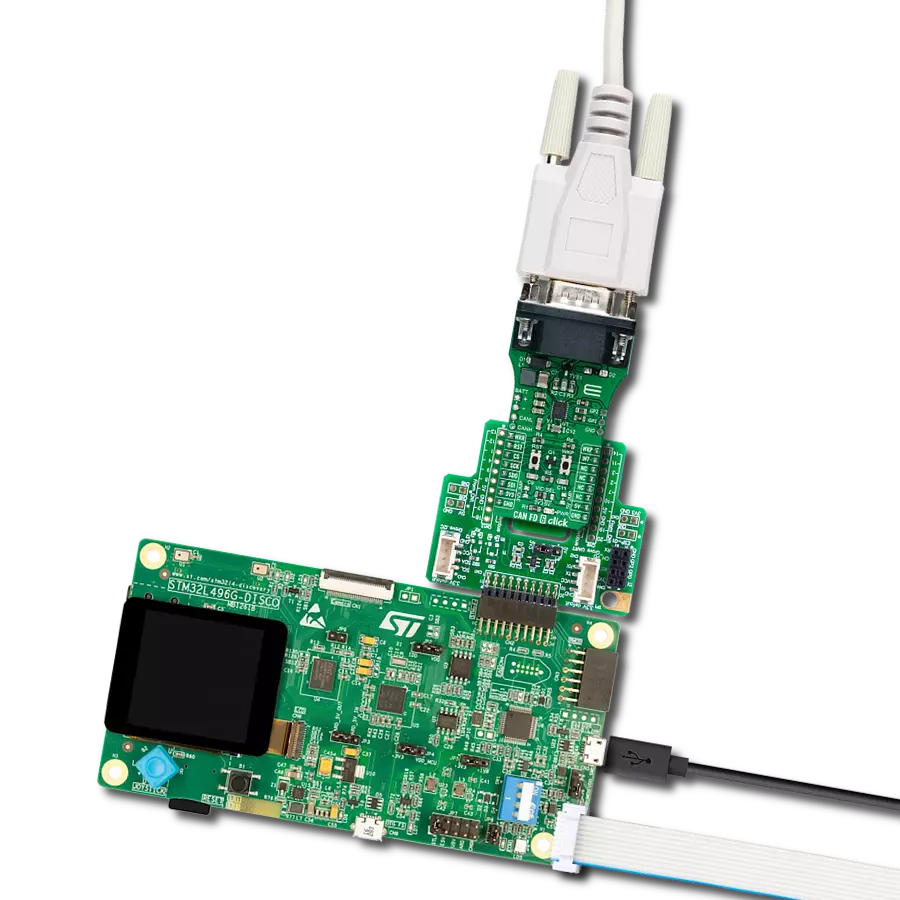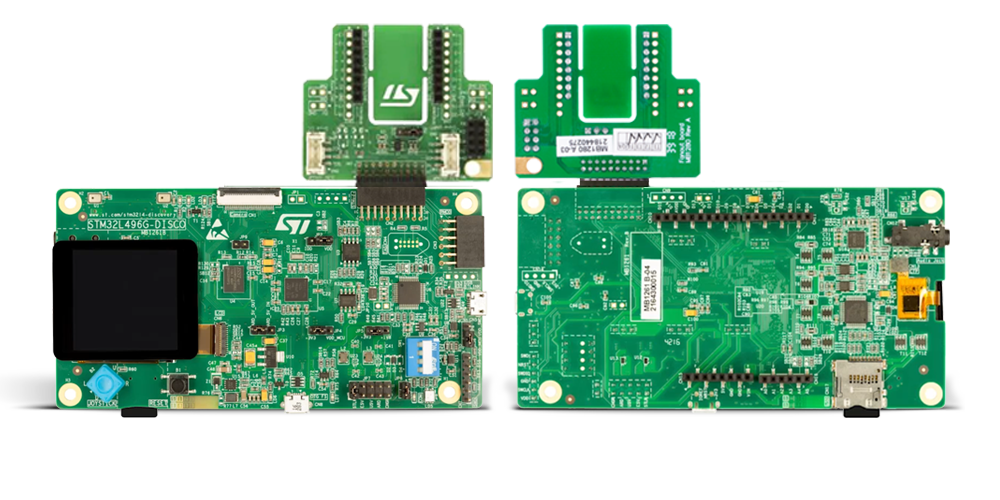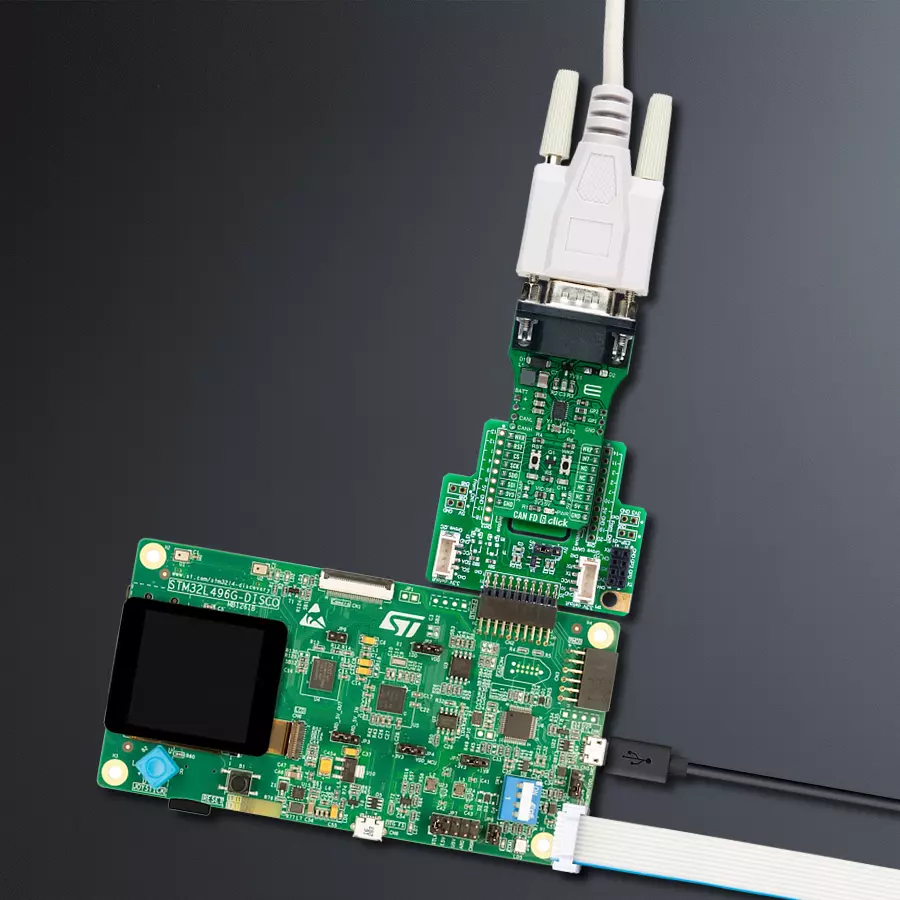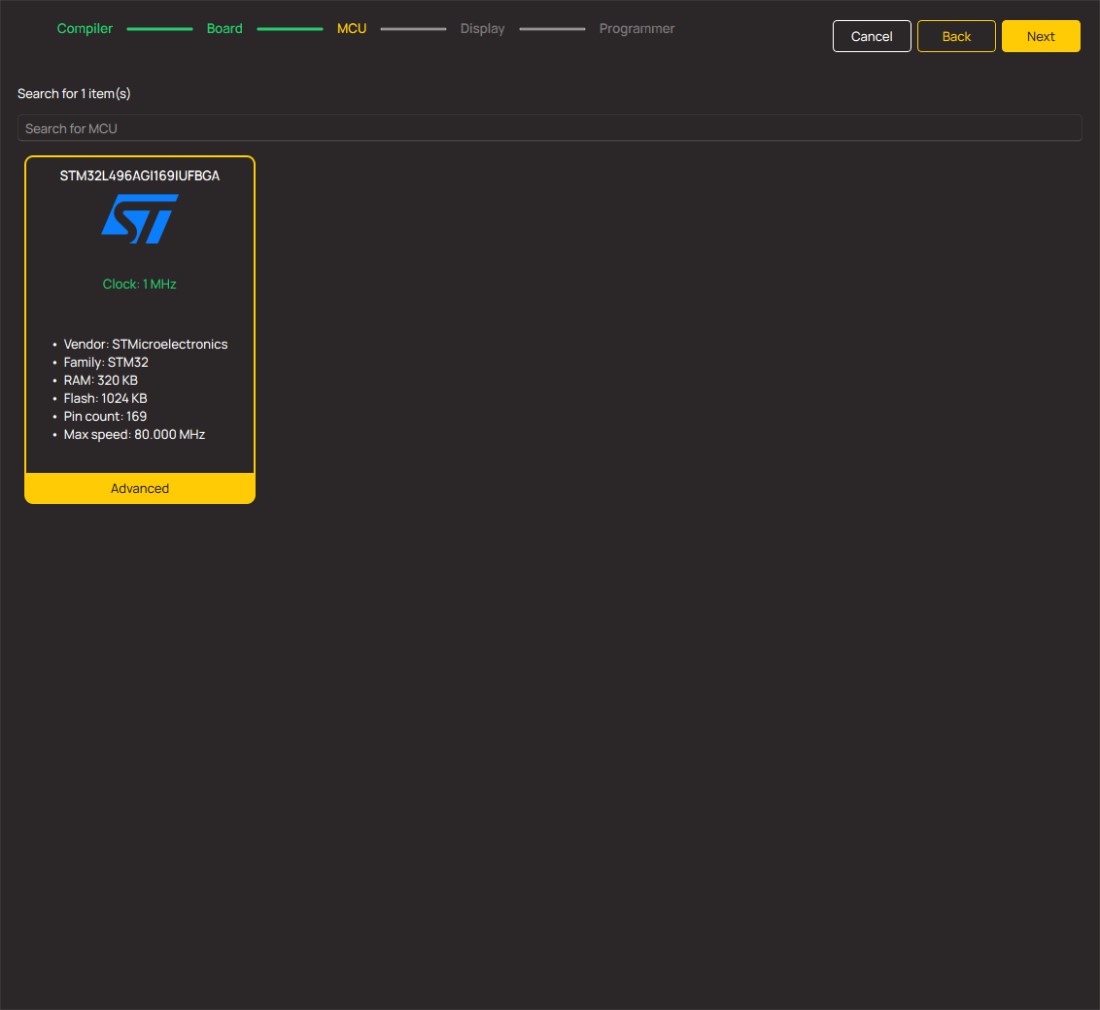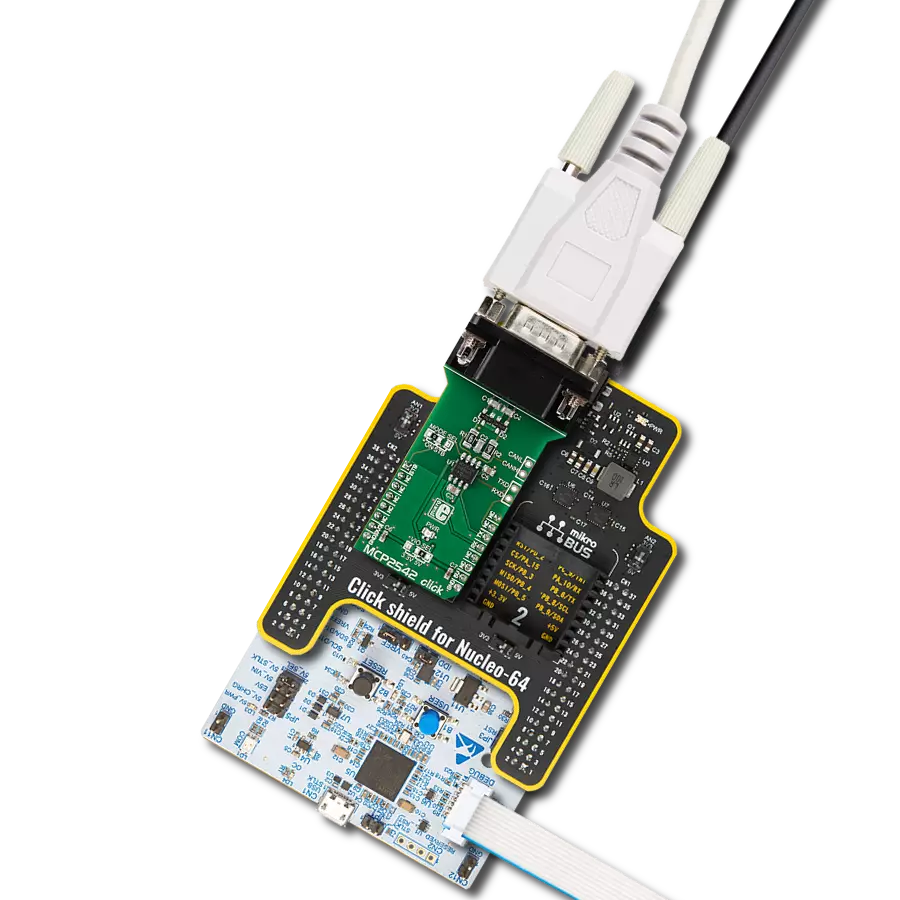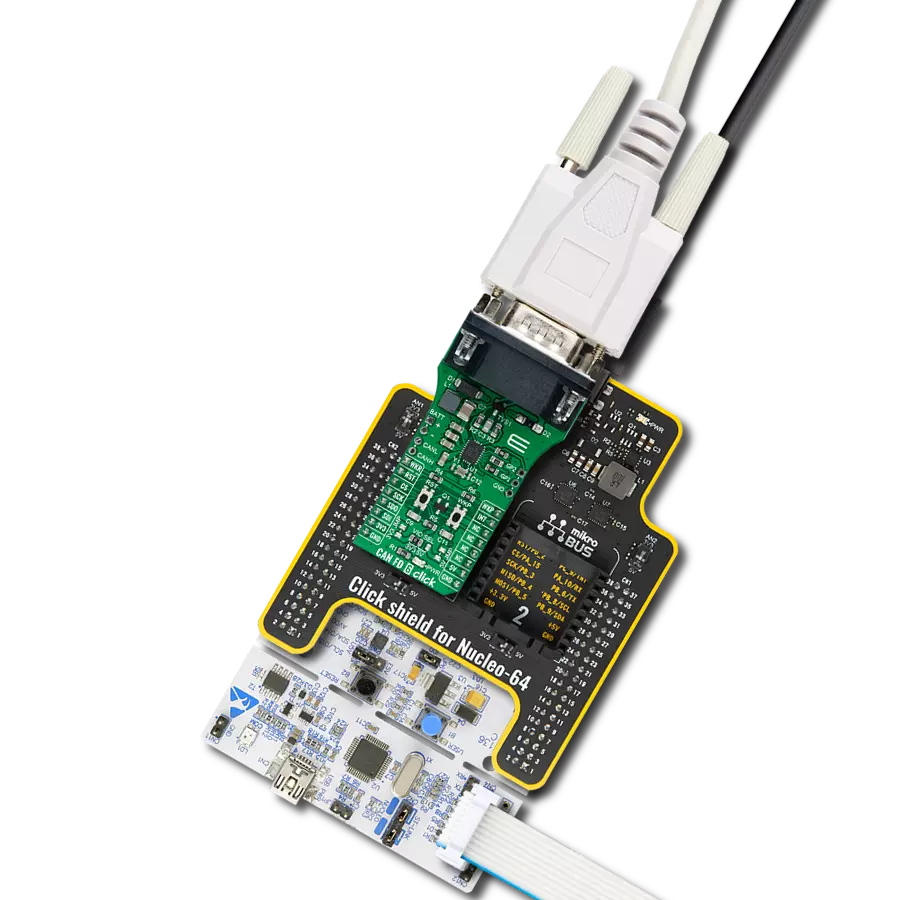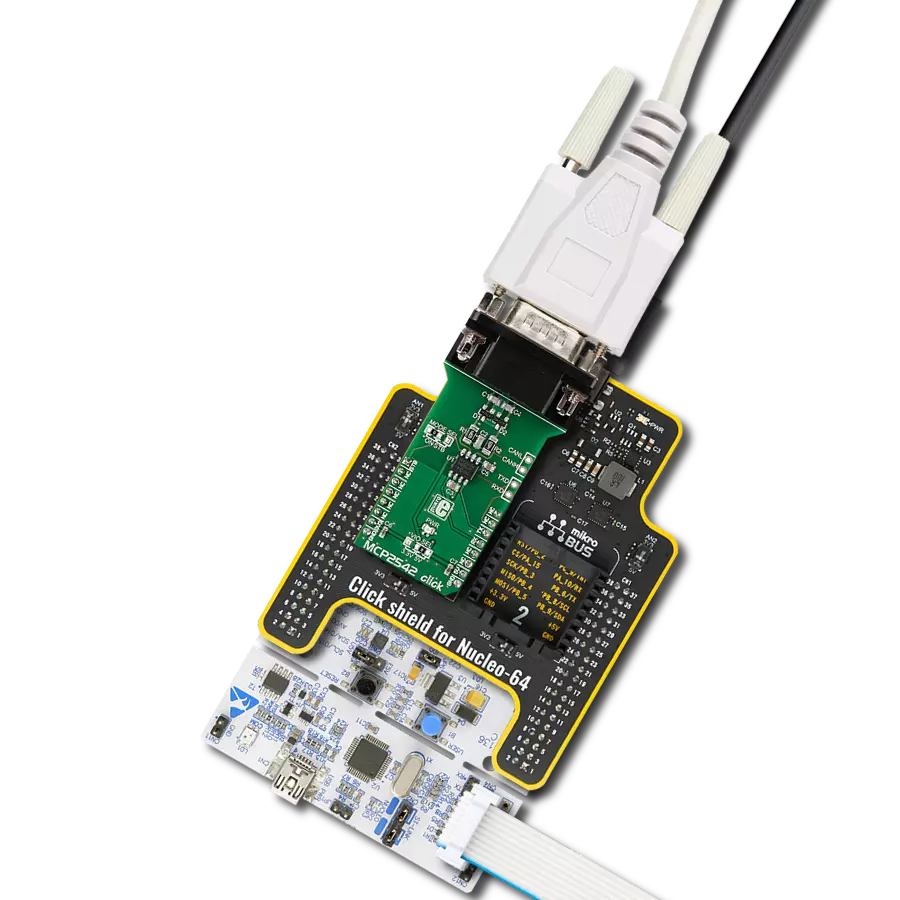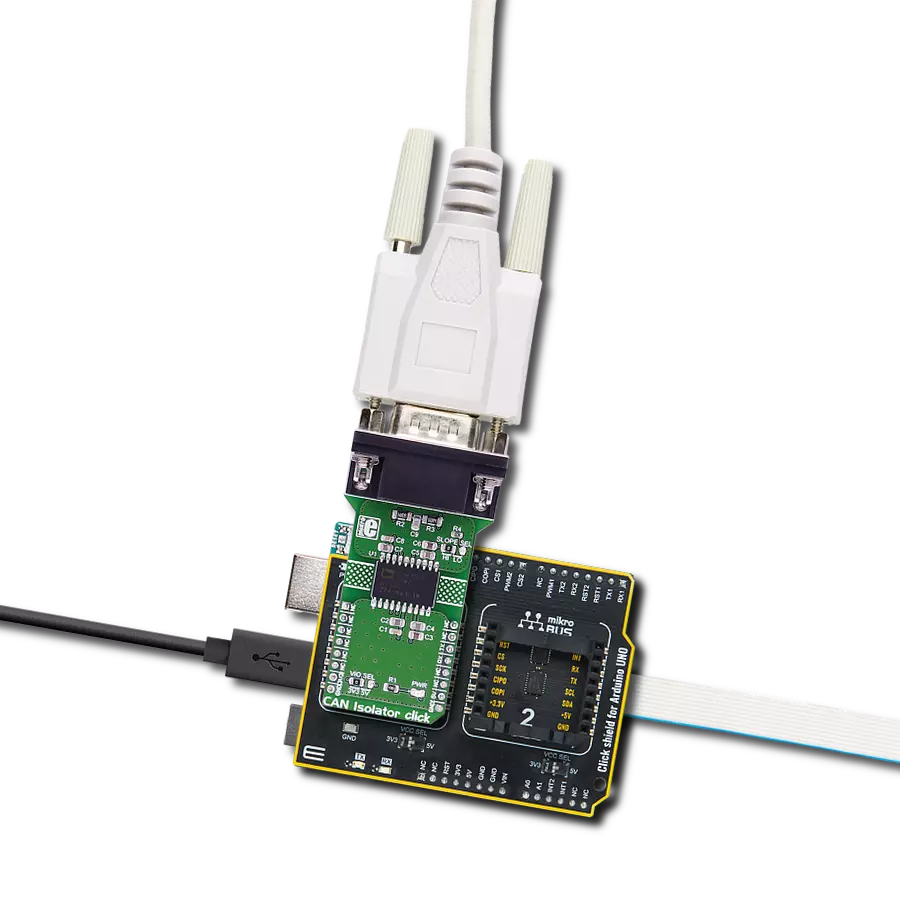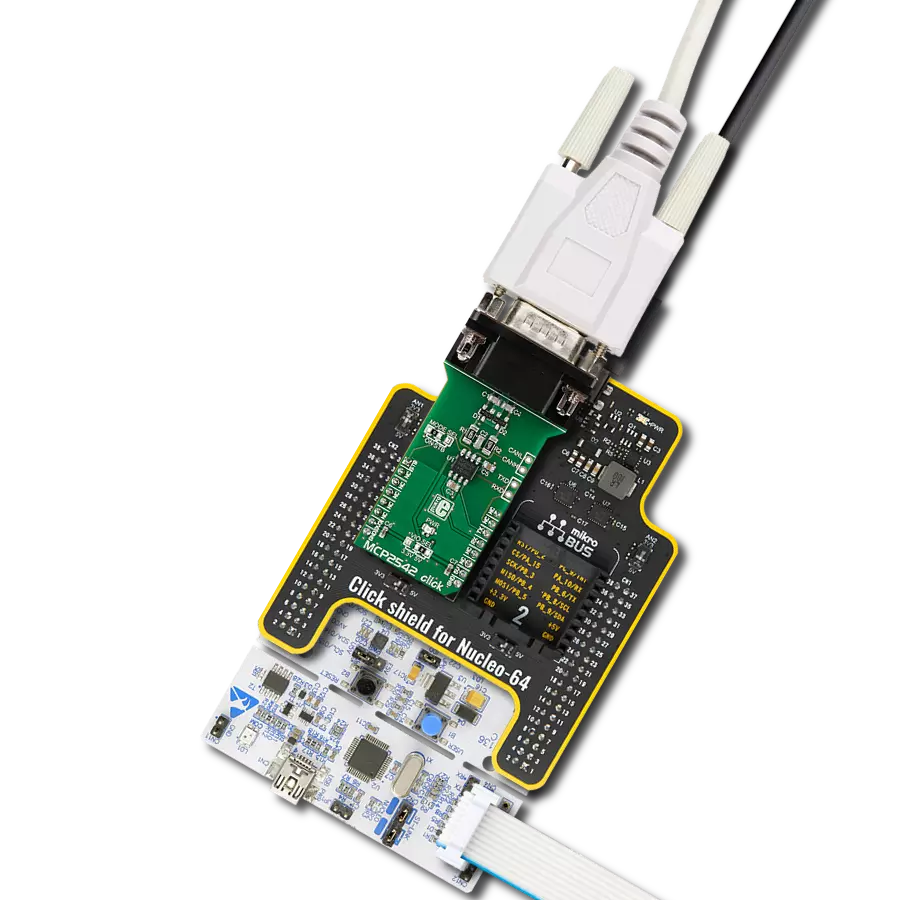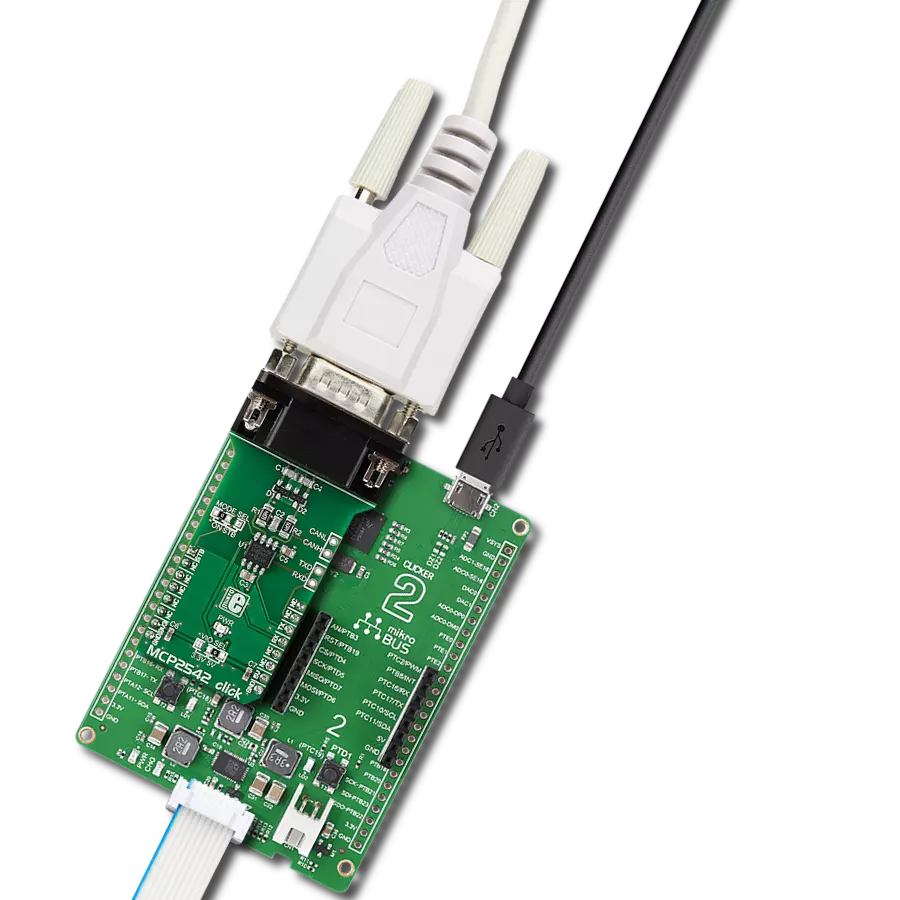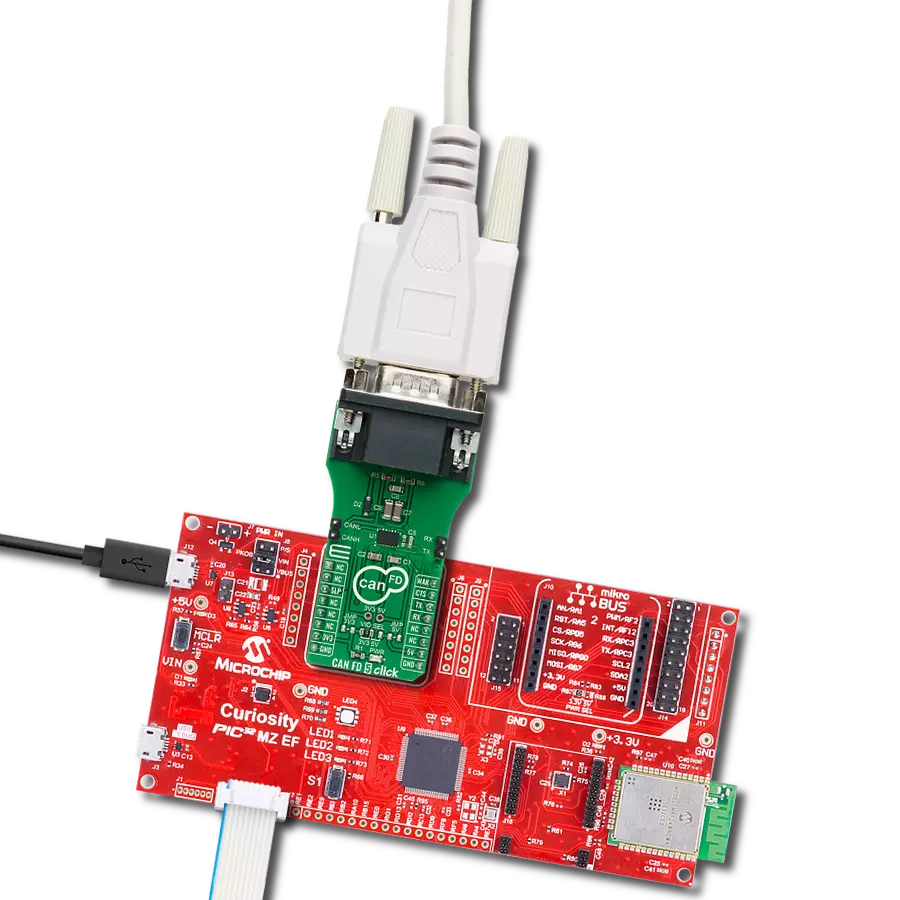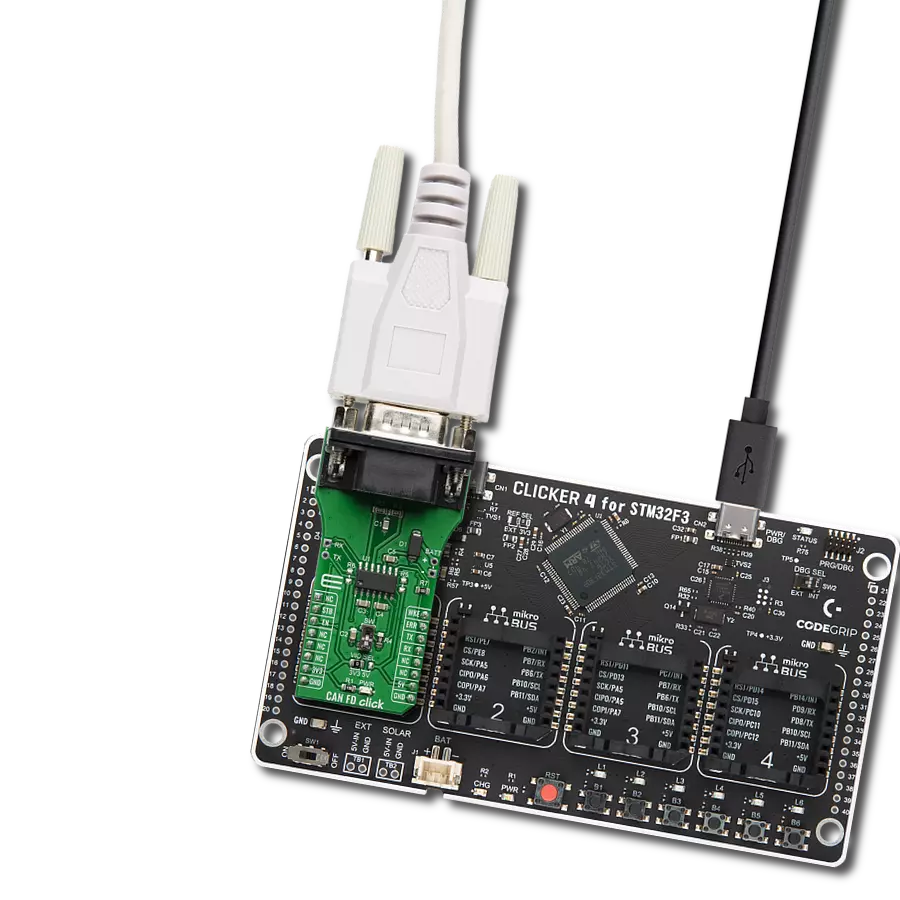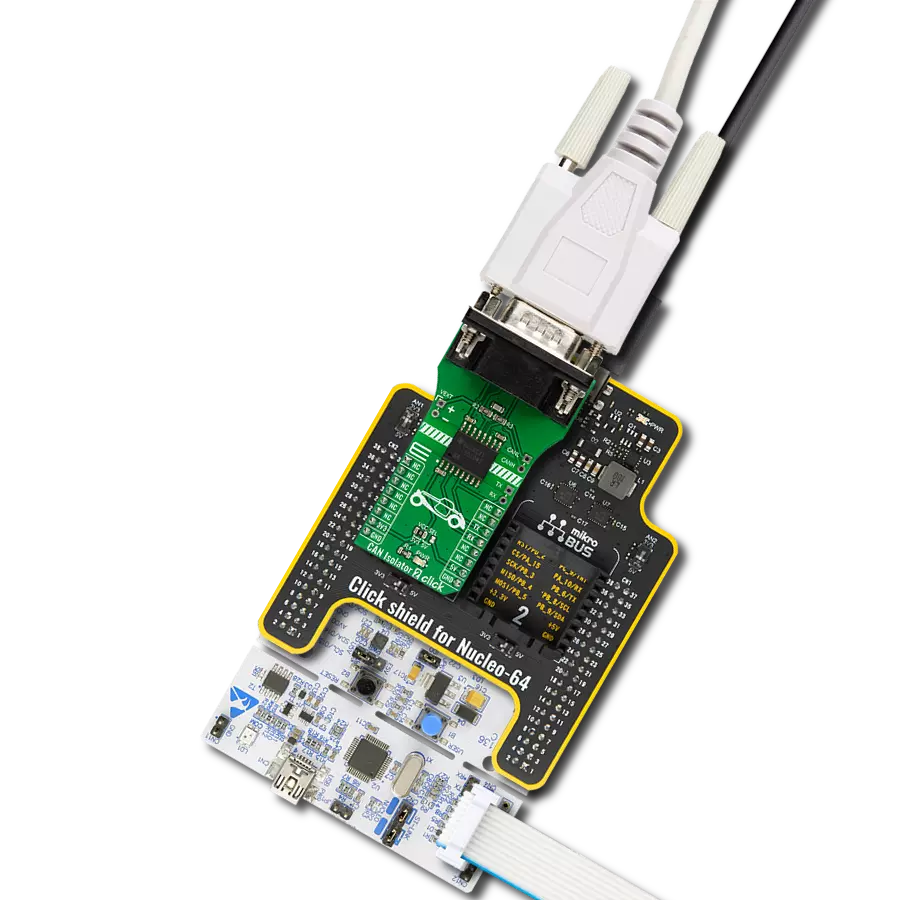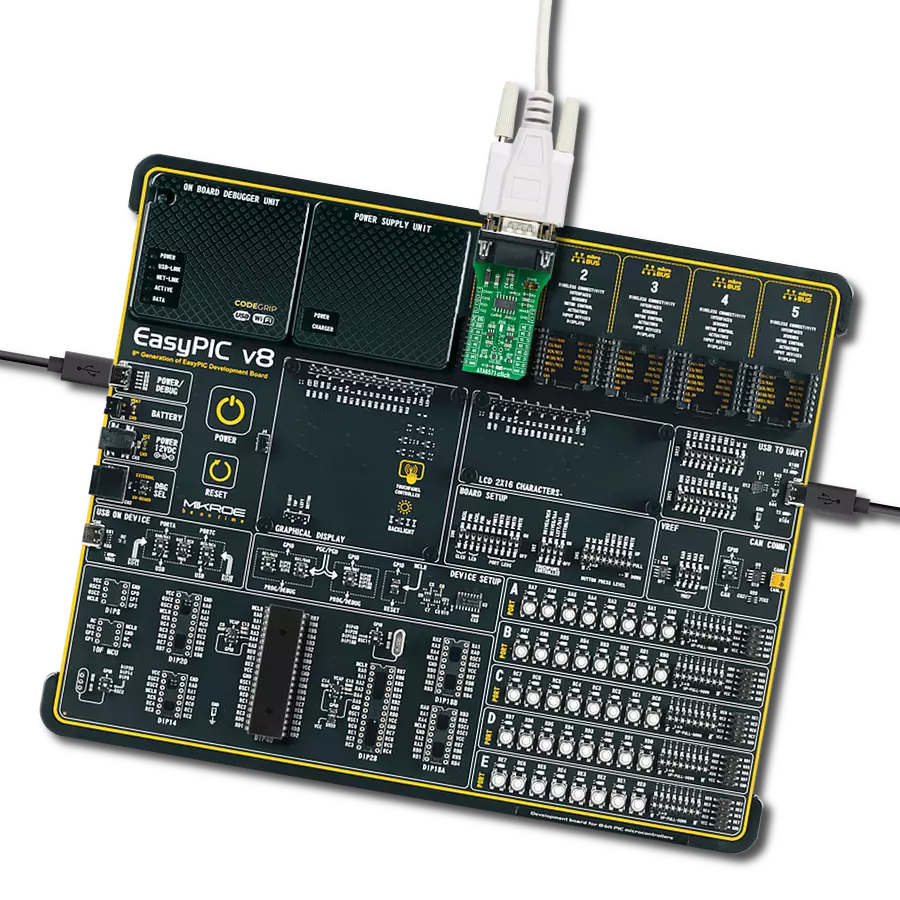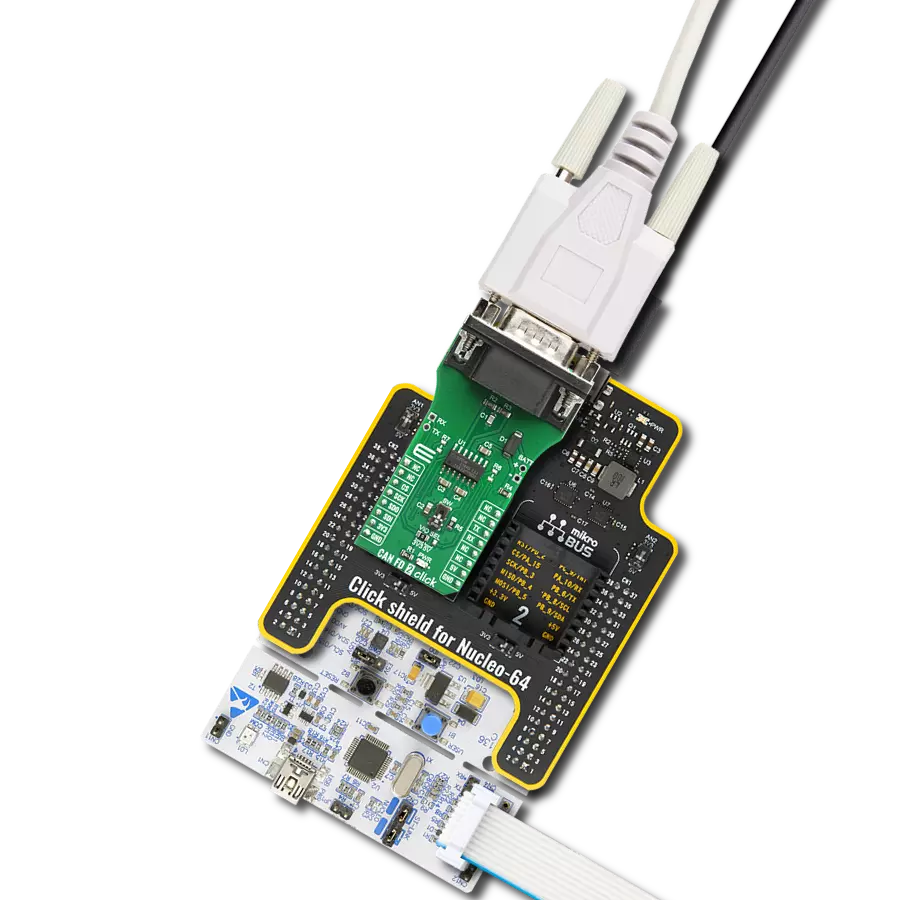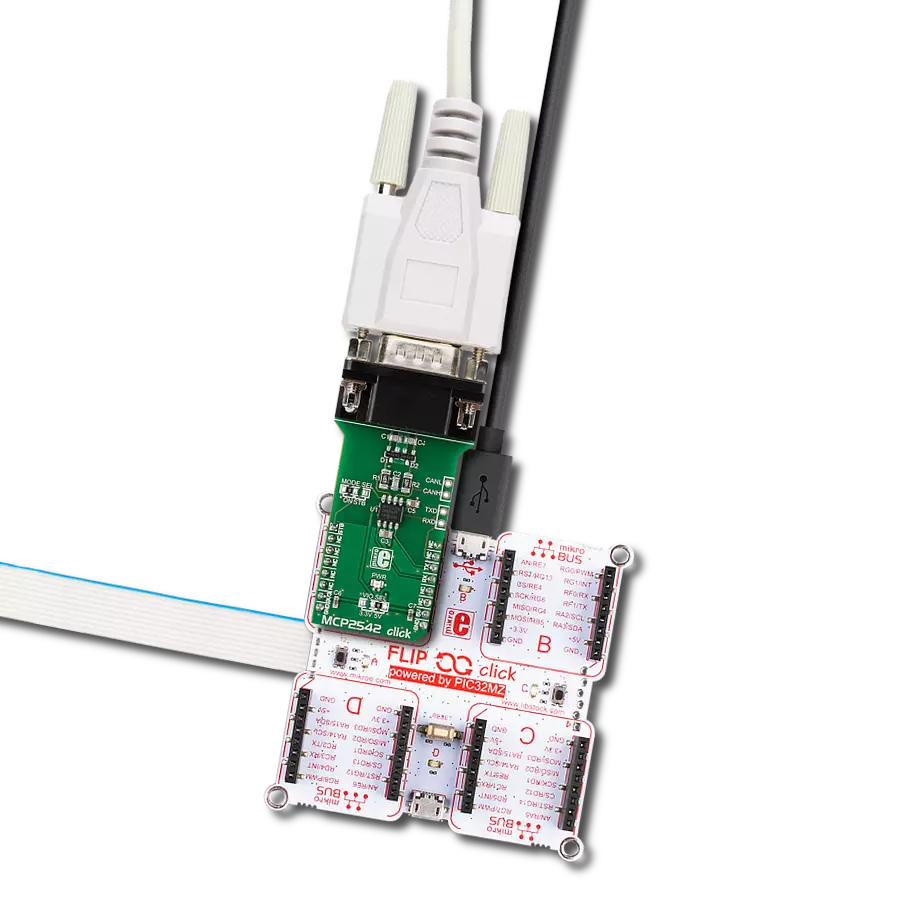我们专为高速卓越设计的CAN FD收发器在汽车和工业系统中提供无与伦比的性能。
A
A
硬件概览
它是如何工作的?
CAN FD 6 Click基于TCAN4550,这是一款支持CAN和CAN FD协议的CAN收发器,提供德州仪器(Texas Instruments)从CAN总线到CAN协议控制器的接口,最高支持5兆比特每秒(Mbps)。它具有高带宽和数据速率灵活性,提供CAN总线与系统处理器之间的SPI接口,并支持通过CAN总线的本地和总线唤醒功能。该设备包括多种保护功能,以提供CAN总线的鲁棒性,包括故障安全模式、内部主导状态超时和宽总线工作范围。TCAN4550具有一个用于从睡眠模式唤醒设备的引脚。此引脚连接到标记为WAKE的外部按钮和标记为WKP的mikroBUS™插座的PWM引脚,以生成本地唤醒功能。CAN总线上的唤醒事件将使抑制输出引脚INH切换到高电平。INH引脚提供了一个内部开关,连接到电池电源电压,并控制外部电压调节
器Microchip的MCP1804。通过标记为3V3JMP和5VJMP的SMD跳线,LDO的输出电压可以为mikroBUS™ 3.3V和5V电源轨供电。然而,Mikroe不建议以这种方式为他们的系统供电,这就是为什么默认情况下这些跳线没有填充的原因。CAN FD 6 Click通过标准SPI接口与MCU通信,支持高达18MHz的时钟速率,用于传输和接收CAN帧。借助额外的40MHz晶振,TCAN4550可以满足高达5Mbps数据速率的CAN FD速率,以支持更高的数据吞吐量,并通过板右侧的6V至24V外部电源供电头进行操作。这一功能使TCAN4550设备非常适合包括汽车在内的许多应用。此Click板™配备了行业标准的DB-9连接器,使与CAN总线的接口简单易行。此外,用户可以通过板左侧边缘的CAN外部头直接连接CAN信号。除了这些功能,
TCAN4550还使用了几个连接到mikroBUS™插座的GPIO引脚。RST引脚和mikroBUS™可以执行硬件复位功能,将设备重置为默认设置并进入待机模式。此功能也可以通过板载标记为RST的按钮实现。除了这些引脚,ATA6571使用WKR引脚作为总线唤醒请求的专用唤醒请求引脚,使用INT引脚作为中断功能,连接到mikroBUS™插座的AN和INT引脚。用户还可以使用板右侧头上的GPIO引脚用于中断目的。此Click板™可以通过VIO SEL跳线选择3.3V和5V逻辑电压电平运行。它允许具有3.3V和5V功能的MCU正确使用UART通信线路。然而,Click板™配备了一个库,包含易于使用的函数和示例代码,可作为进一步开发的参考。
功能概述
开发板
32L496GDISCOVERY Discovery 套件是一款功能全面的演示和开发平台,专为搭载 Arm® Cortex®-M4 内核的 STM32L496AG 微控制器设计。该套件适用于需要在高性能、先进图形处理和超低功耗之间取得平衡的应用,支持无缝原型开发,适用于各种嵌入式解决方案。STM32L496AG 采用创新的节能架构,集成
了扩展 RAM 和 Chrom-ART 图形加速器,在提升图形性能的同时保持低功耗,使其特别适用于音频处理、图形用户界面和实时数据采集等对能效要求较高的应用。为了简化开发流程,该开发板配备了板载 ST-LINK/V2-1 调试器/编程器,提供即插即用的调试和编程体验,使用户无需额外硬件即可轻松加载、调
试和测试应用程序。凭借低功耗特性、增强的内存能力以及内置调试工具,32L496GDISCOVERY 套件是开发先进嵌入式系统、实现高效能解决方案的理想选择。
微控制器概述
MCU卡片 / MCU
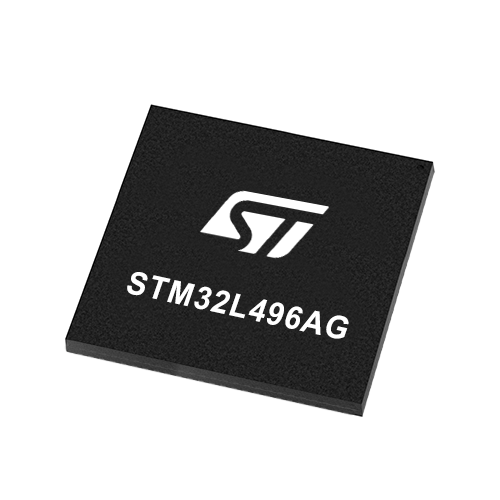
建筑
ARM Cortex-M4
MCU 内存 (KB)
1024
硅供应商
STMicroelectronics
引脚数
169
RAM (字节)
327680
你完善了我!
配件
使用的MCU引脚
mikroBUS™映射器
“仔细看看!”
Click board™ 原理图

一步一步来
项目组装
软件支持
库描述
该库包含 CAN FD 6 Click 驱动程序的 API。
关键功能:
canfd6_mcan_write_txbuffer- 此功能将CAN消息写入指定的TX缓冲区,以便稍后通过发送缓冲区内容功能进行传输。canfd6_mcan_transmit_buffer_contents- 此功能将指定的缓冲区索引位值写入TXBAR寄存器,以请求发送消息。canfd6_mcan_read_nextfifo- 此功能将读取指定的下一个MCAN FIFO元素,并返回相应的头信息和数据负载。
开源
代码示例
完整的应用程序代码和一个现成的项目可以通过NECTO Studio包管理器直接安装到NECTO Studio。 应用程序代码也可以在MIKROE的GitHub账户中找到。
/*!
* @file main.c
* @brief CANFD6 Click example
*
* # Description
* This application presents the capabilities of the
* CAN FD 6 Click board. The board can be used both
* as a receiver and a transmitter. Use def directive
* to define the receive or transmit app.
*
* The demo application is composed of two sections :
*
* ## Application Init
* The app starts by initializing the UART LOG and
* SPI drivers. The default cfg function performs the
* mandatory settings of the device. The user's default
* configuration can be modified ( for more information
* about device configuration, check the datasheet ).
* Additionally, the app writes two messages to the FIFO
* buffer and sends them if the transmit buffer content
* event is triggered.
*
* ## Application Task
* Depending on the defined app option, the application
* task performs the following procedure. If the transmitter
* is preferred, the application task triggers the transmit
* buffer contents event of the first message and, later on,
* the second message. On the other hand, the receiver waits
* for the CAN FD interrupt, where the payload is read along
* with the header ID.
*
* @author Stefan Nikolic
*
*/
#include "board.h"
#include "log.h"
#include "canfd6.h"
// Comment out the line below in order to switch the application mode to receiver
#define DEMO_APP_TRANSMITTER
#define CANFD6_FIRST_MSG 0
#define CANFD6_SECOND_MSG 1
static canfd6_t canfd6;
static log_t logger;
void application_init ( void ) {
log_cfg_t log_cfg; /**< Logger config object. */
canfd6_cfg_t canfd6_cfg; /**< Click config object. */
/**
* Logger initialization.
* Default baud rate: 115200
* Default log level: LOG_LEVEL_DEBUG
* @note If USB_UART_RX and USB_UART_TX
* are defined as HAL_PIN_NC, you will
* need to define them manually for log to work.
* See @b LOG_MAP_USB_UART macro definition for detailed explanation.
*/
LOG_MAP_USB_UART( log_cfg );
log_init( &logger, &log_cfg );
log_info( &logger, " Application Init " );
// Click initialization.
canfd6_cfg_setup( &canfd6_cfg );
CANFD6_MAP_MIKROBUS( canfd6_cfg, MIKROBUS_1 );
err_t init_flag = canfd6_init( &canfd6, &canfd6_cfg );
if ( init_flag == SPI_MASTER_ERROR ) {
log_error( &logger, " Application Init Error. " );
log_info( &logger, " Please, run program again... " );
for ( ; ; );
}
canfd6_default_cfg( &canfd6 );
Delay_ms ( 100 );
#ifdef DEMO_APP_TRANSMITTER
canfd6_mcan_tx_header_t canfd6_header = { 0 };
uint8_t data_send_buf[ 64 ] = { 0 };
strcpy ( data_send_buf, "MIKROE" );
canfd6_header.DLC = CANFD6_MCAN_DLC_6B;
canfd6_header.ID = 0x123;
canfd6_header.FDF = 1;
canfd6_header.BRS = 1;
canfd6_header.EFC = 0;
canfd6_header.MM = 0;
canfd6_header.RTR = 0;
canfd6_header.XTD = 0;
canfd6_header.ESI = 0;
canfd6_mcan_write_txbuffer( &canfd6, CANFD6_FIRST_MSG, &canfd6_header, data_send_buf );
strcpy ( data_send_buf, "CAN FD 6 Click board" );
canfd6_header.DLC = CANFD6_MCAN_DLC_20B;
canfd6_header.ID = 0x456;
canfd6_header.FDF = 1;
canfd6_header.BRS = 1;
canfd6_header.EFC = 0;
canfd6_header.MM = 0;
canfd6_header.RTR = 0;
canfd6_header.XTD = 0;
canfd6_header.ESI = 0;
canfd6_mcan_write_txbuffer( &canfd6, CANFD6_SECOND_MSG, &canfd6_header, data_send_buf );
log_printf( &logger, " Application Mode: Transmitter\r\n" );
#else
log_printf( &logger, " Application Mode: Receiver\r\n" );
#endif
log_info( &logger, " Application Task " );
}
void application_task ( void ) {
#ifdef DEMO_APP_TRANSMITTER
log_printf( &logger, " Transmit first message\r\n" );
canfd6_mcan_transmit_buffer_contents( &canfd6, CANFD6_FIRST_MSG );
Delay_ms ( 1000 );
Delay_ms ( 1000 );
log_printf( &logger, " Transmit second message\r\n" );
canfd6_mcan_transmit_buffer_contents( &canfd6, CANFD6_SECOND_MSG );
Delay_ms ( 1000 );
Delay_ms ( 1000 );
#else
uint8_t cnt = 0;
if ( !canfd6_get_int_pin( &canfd6 ) ) {
canfd6_device_interrupts_t canfd6_dev_ir = { 0 };
canfd6_mcan_interrupts_t canfd6_mcan_ir = { 0 };
canfd6_device_read_interrupts( &canfd6, &canfd6_dev_ir );
canfd6_mcan_read_interrupts( &canfd6, &canfd6_mcan_ir );
if ( canfd6_dev_ir.SPIERR ) {
canfd6_device_clear_spierr( &canfd6 );
}
if ( canfd6_mcan_ir.RF0N ) {
canfd6_mcan_rx_header_t canfd6_msg_header = { 0 };
uint8_t num_bytes = 0;
uint8_t data_payload[ 64 ] = { 0 };
canfd6_mcan_clear_interrupts( &canfd6, &canfd6_mcan_ir );
num_bytes = canfd6_mcan_read_nextfifo( &canfd6, CANFD6_RXFIFO0, &canfd6_msg_header, data_payload );
log_printf( &logger, " Message received ID[ 0x%X ]: ", canfd6_msg_header.ID );
while ( cnt < 64 ) {
if ( data_payload[ cnt ] ) {
log_printf( &logger, "%c", data_payload[ cnt ] );
cnt++;
} else {
log_printf( &logger, "\r\n" );
cnt = 64;
}
}
}
}
#endif
}
int main ( void )
{
/* Do not remove this line or clock might not be set correctly. */
#ifdef PREINIT_SUPPORTED
preinit();
#endif
application_init( );
for ( ; ; )
{
application_task( );
}
return 0;
}
// ------------------------------------------------------------------------ END
额外支持
资源
类别:控制器局域网络
